Take the
Panic
out of
Pandemic
Prepare for the coronavirus, but don’t panic. With a constant deluge of information and an ever increasing number of cases and deaths, that’s easier said than done. During a pandemic, technology provides benefits but also creates challenges. This exploration shares ideas for potential solutions that would allow technology to further help our ability to deal with pandemics. We're not doctors, just concerned citizens and technologists who wanted to use our professional skills in this situation. For reference, this exploration was published on March 20, 2020 in the middle of a constantly evolving crisis.
COVID-19 is a novel coronavirus that first emerged at the end of 2019 in Wuhan, China. Most cases are mild but about 1 out of every 6 people diagnosed with COVID-19 becomes seriously ill.1 On March 11th, the World Health Organization (WHO) categorized COVID-19 as a pandemic due to its global spread and increasing severity.2 As of March 20th, there are more than 266,000 cases across 164 countries including over 11,000 deaths.3
Countries around the world are struggling to deal with the impact of COVID-19. The situation is evolving rapidly and the future remains unclear. There’s an overwhelming amount of information and many people are unsure how the pandemic will ultimately impact them as individuals, as well as society as a whole. People are looking for guidance on what they can do to limit the impact of COVID-19 as much as possible.

Information Overload
News of COVID-19 has been spreading wildly around the globe with nearly 20 million online mentions of coronavirus-related terms on March 11th alone.4 Reputable sources backed by data, like the global cases dashboard maintained by Johns Hopkins and the case reporting dashboard maintained by the government of Hong Kong, provide up-to-date information about the spread of the disease. National health organizations, like the Centers for Disease Control (CDC) in the United States, maintain detailed resources to help citizens better understand the disease and how to prepare for an outbreak in their local community.
Unfortunately, inaccurate and harmful information is also being shared online. The situation is so dire that the WHO considers it an “infodemic”.5 They define an infodemic as “an overabundance of information—some accurate and some not—that makes it hard for people to find trustworthy sources and reliable guidance when they need it.”6
A 2018 Pew Research Center survey found that adults in the U.S. received more news from social media than newspapers and that most people read an article for 15 seconds or less and/or watched a video for 10 seconds or less.7 Social media platforms have allowed millions of voices to be amplified which has led to a proliferation of misleading and false information.
False cures and harmful conspiracies have overshadowed critical information from organizations like the WHO and national health agencies. These organizations have worked to partner with social media and search engine giants in hopes of putting the best information at an algorithmic advantage. As the world struggles to contain COVID-19, however, the proliferation of unreliable sources of information remains one of the biggest challenges.
Why it Matters
With an ever evolving situation, accurate information is the key to decreasing panic and amplifying important prevention and containment practices. There is a high demand for timely and accurate information.
By guiding people to credible sources of information presented in a consolidated format, we can prevent information overload and help them make appropriate decisions for themselves and their communities.
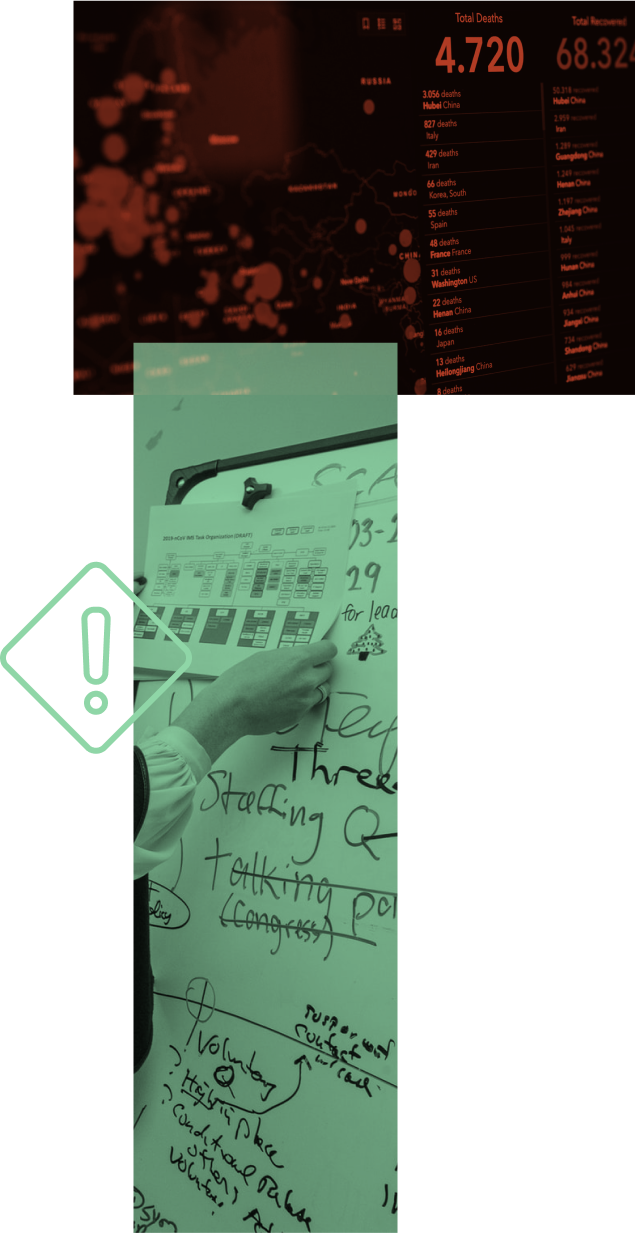
Problem #1 - Information Overload
-
Solution Concept #1
Consolidate trustworthy information
We can provide a fact-checking outlet that allows people to track trending news in a way that prioritizes and elevates accurate and verified information. This news aggregator will pull in a variety of credible sources so people can find reliable information in one place rather than switching between multiple news sources and social media sites.
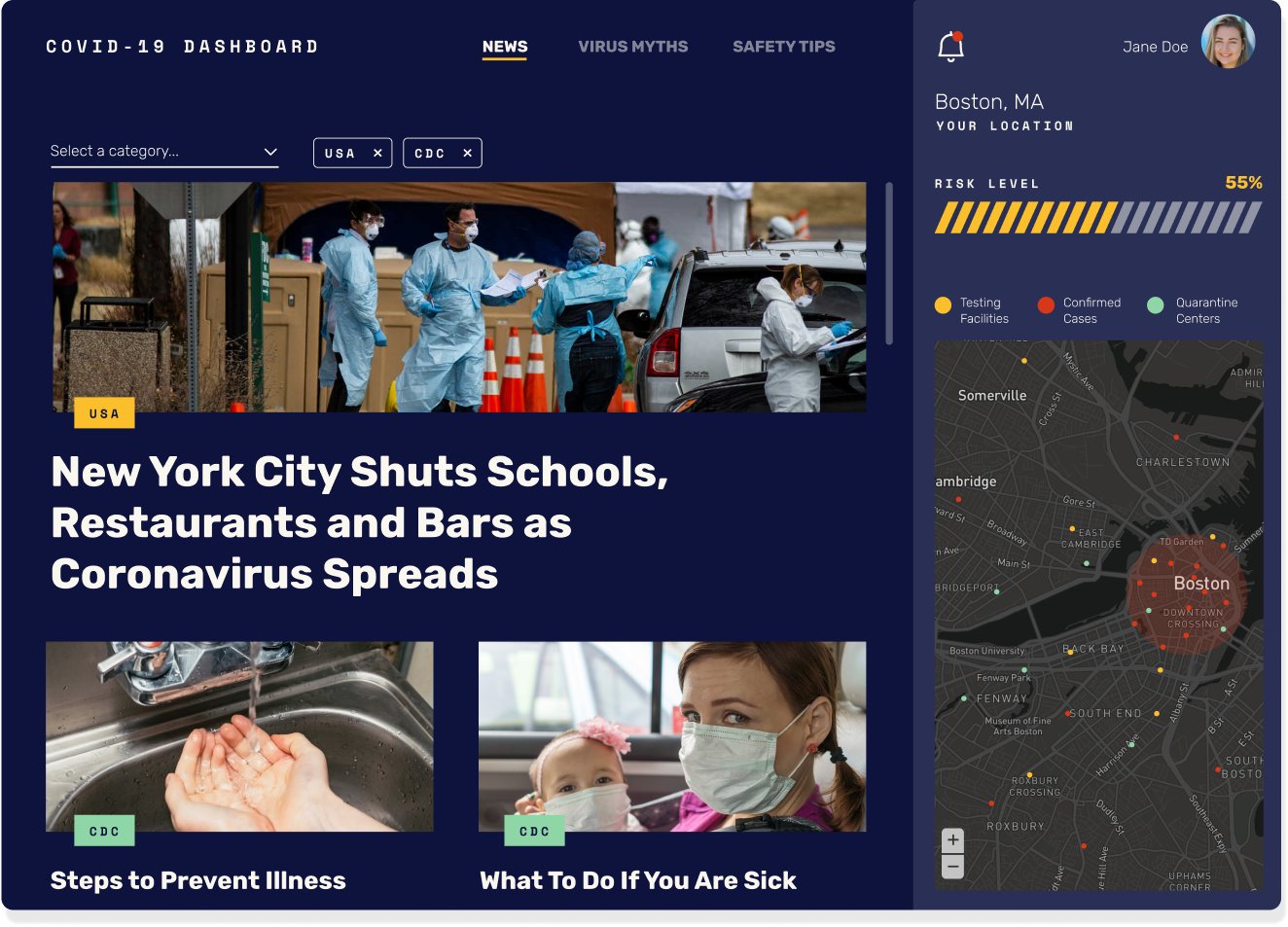
-
Solution Concept #2
Bust harmful myths
We can help people clearly differentiate fact from fiction by keeping track of harmful myths — from conspiracy theories to false cures — and amplifying accurate information.
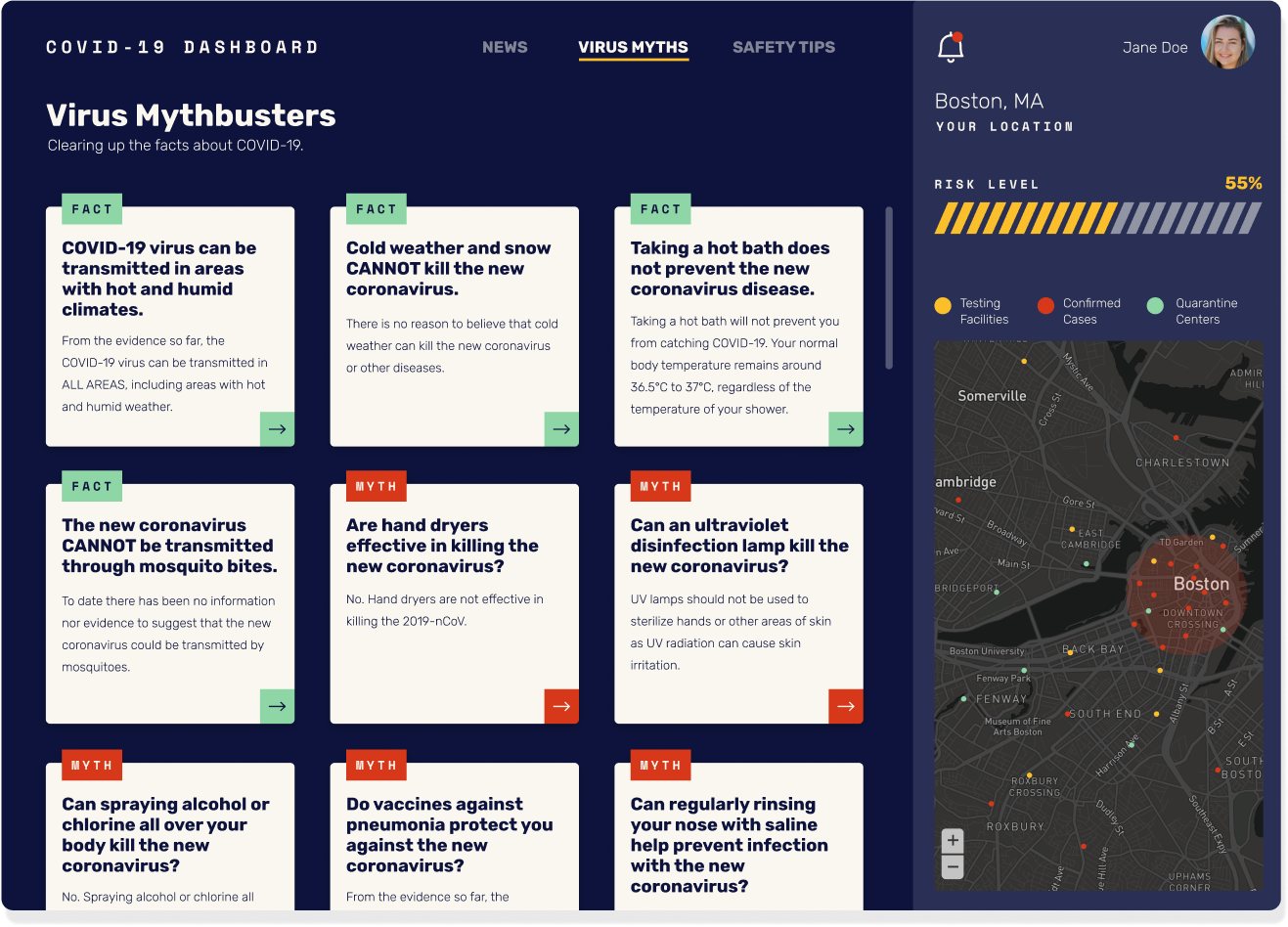
Lack of Clarity
Even if you consume reliable information, it’s still difficult to understand what a pandemic means to you as an individual. Location plays a large role. If you live in an area that already has wide community spread, you need to think differently than someone living in an area that’s focused on initial containment measures.
Other important factors include an individual’s age, existing health conditions, and living situation. For example, COVID-19 is much more dangerous for older individuals or those with serious chronic illnesses. Individuals in these groups have been encouraged by the CDC to take more aggressive measures to protect themselves.7
Why it Matters
As people consume a constant stream of news and updates from health officials, they really want to know one thing — what does this mean for me? If they don’t translate the information appropriately for their individual situation, they may not implement necessary measures or may take unnecessary actions. This could lead to additional community spread which puts more people in danger or drive individuals to make unnecessary purchases leading to shortages for those who have a greater immediate need.
By surfacing information that’s specific to an individual, we can help them better navigate a pandemic situation. Personalized guidance helps people take the right actions at the right time. It may also alleviate stress and increase confidence.

Problem #2 - Lack of Clarity
-
Solution Concept #1
Consolidate trustworthy information
We can provide a fact-checking outlet that allows people to track trending news in a way that prioritizes and elevates accurate and verified information. This news aggregator will pull in a variety of credible sources so people can find reliable information in one place rather than switching between multiple news sources and social media sites.
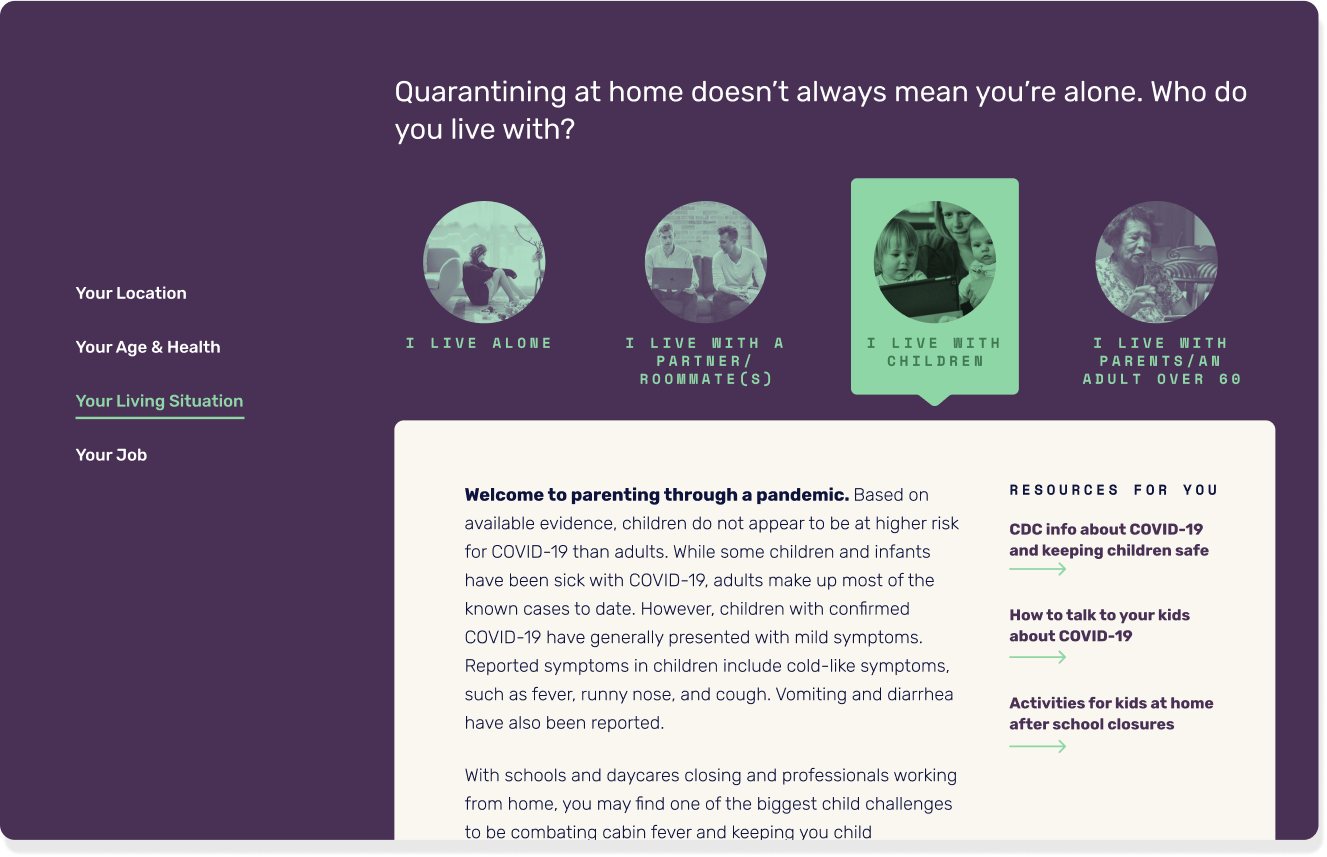
No Man is an Island
Since young, healthy individuals have a low risk of developing complications from COVID-19, they may have fewer concerns and maintain existing social behaviors.9 They can still spread the disease, however, and put others, like elderly community members, at risk. They aren’t the only ones putting themselves first.
Faced with an uncertain and rapidly-evolving situation that may have dire consequences, the natural human instinct is one of self-preservation. In the case of COVID-19, where proactive quarantining and social distancing are the recommended actions to reduce spread of the disease, people are hunkering down in survival mode. This often involves taking actions like stockpiling food and other supplies10, and limiting contact with other individuals.
The net result is that sorely needed resources are unavailable to the most vulnerable members of society. High risk individuals are more likely to become infected and experience serious complications or even die. Grocery stores are sold out of affordable, non-perishable items and household essentials because of panic-buying. Children may struggle to access free or subsidized meals because schools are closed.11
Why it Matters
It is difficult to go beyond our initial instincts for self-preservation, but the only way to deal with a pandemic is to constantly evaluate and re-evaluate our impact on the community at large.
By helping people understand the impact of their behaviors, we can help them make better decisions that benefit everyone.
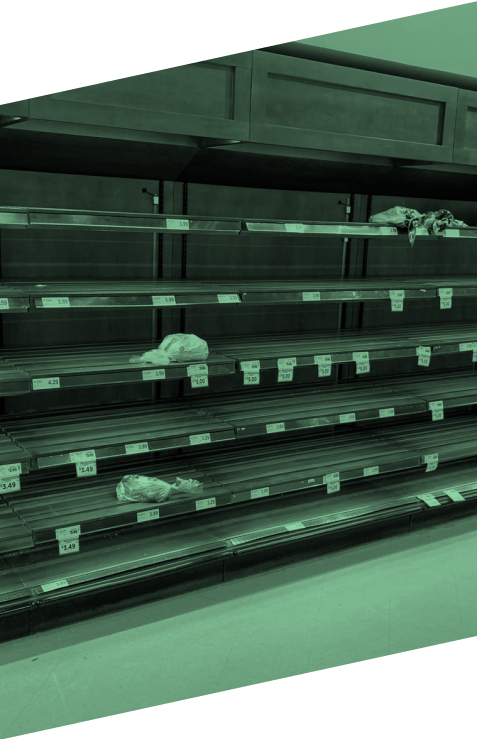
Problem #3 - No Man is an Island
-
Solution Concept #1
Understand your impact
We can encourage people to take actions that will benefit the community as a whole by helping them understand how they can harm others even if their personal risk is low.
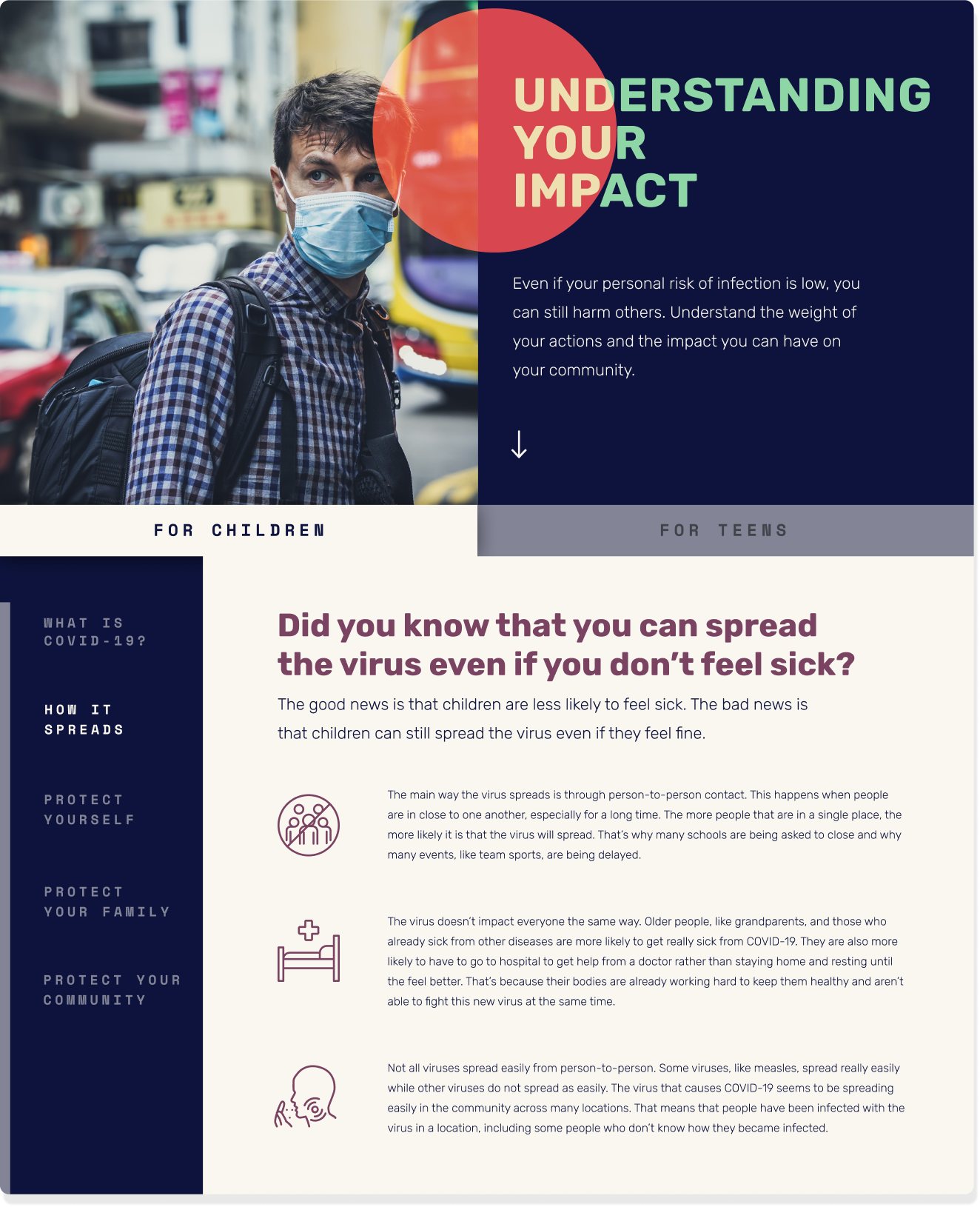
-
Solution Concept #2
Find supplies for everyone
We can make it easier for more people to access the resources they need by providing helpful guidance on the type and quantity of supplies they need, as where to find those supplies in their area. We should also surface ways to contribute to local organizations or to share resources with neighbors.

Change is Hard
During pandemics, public health authorities frequently promote basic protective measures, like washing hands frequently and avoiding touching your face, in order to reduce disease transmission.12 Even if we know we should do something, it is difficult to actually change our existing behaviors.
Educational campaigns related to hygiene behaviors like handwashing provide an easy, low-cost way to reduce the spread of a disease but they aren’t failproof.13 Bad habits are less likely to persist if changes are made to an individual’s environment to make hand washing easier.14
Even those who embrace better handwashing practices may be unable to overcome a behavior like touching their face. It is a deeply ingrained habit that develops at a young age that may help humans connect with others, control stress, and form memories.15 Since breaking the face touching habit is so difficult, increasing hand washing frequency is even more important.16
Why it Matters
Behavior change is difficult but introducing basic protective measures is the best way for everyone to do their part to reduce disease transmission. It is especially important for a virus like COVID-19 which can be transmitted before an individual starts showing symptoms.17
By making it easier for people to put basic protective measures into practice, we can improve adherence and limit the spread of a disease.
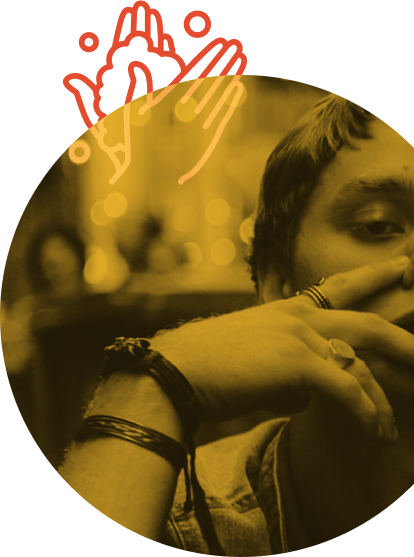
Problem #4 - Change is Hard
-
Solution Concept #1
Monitor your movements
We could all use a helping hand when it comes to remembering to wash our hands and avoid touching our faces. A pair of smart wristbands could be worn to keep you on track.
-
A gentle vibration whenever you hand elevates to face height is a gentle reminder of an unconscious action.
-
Timed to vibrate right before your regular meal times, the wristband can remind you to wash your hands at this doctor-recommended interval.
-
Leave the house lately? The wristbands can vibrate when you first return home to remind you to wash your hands ASAP.
-